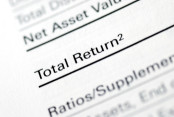In today’s near-zero rate environment, fixed-income investors are hungry for returns to keep their cash flows on track.
Preferred income securities can help increase overall average returns, but research and due diligence are necessary to minimize risks. Preferred stocks are often misunderstood by investors. So, I’ll attempt to offer a clear, brief explanation before digging into their pros and cons.
Preferred Stocks Versus Bonds
Much like traditional bonds, preferred stocks are issued at a fixed par value (usually $25) and pay scheduled, fixed dividends to investors. Preferred stocks act like bonds in that they offer a fixed or floating rate of income, but investors are rewarded for their stock rather than bond risks. Many are rated by independent credit rating agencies, and typically, they are rated lower than bonds because they offer fewer guarantees and claims on assets.
Bond investors hold a debt obligation on a company, which means they have a right to collect interest during its term and a return equal to the original principal investment once the bond reaches maturity. The bond represents an investor’s claim on the assets of a company in the case of a default or bankruptcy. Unlike bonds where a company risks defaulting if payments are missed, preferred dividend payments can be withheld by the issuing company without facing default risk. Traditional corporate bonds often produce higher yields thank preferred stocks, however.
Preferred Stocks Versus Common Stocks
Companies issue two types of stock: common and preferred. Common stock entitles owners to vote at shareholder meetings, receive dividends and participate in a company’s potential gains in the form of capital appreciation – or potential losses. Preferred stockholders usually lack voting rights, but they receive dividends before common shareholders and receive priority if the company goes bankrupt and its assets are liquidated. Preferred stockholders have claim to the income of a company over common shareholders, but they do not have claim to company assets like bondholders.
Potential Benefits for Preferred Stock Investors
Preferred stocks can be a valuable component of your investment portfolio – particularly as a means of driving long-term fixed income. They can be used to:
- Enhance income – both gross and net of taxes
- Diversify your investment portfolio
- Drive strong performance especially from bank preferreds
- Provide attractive relative value compared with other fixed-income asset classes
- Mitigate interest rate risk with duration on certain types of preferred stocks
Additionally, some preferred securities are taxed as qualified dividends, which offers investors a tax break over funds taxed as ordinary income.
Potential Benefits for Preferred Stock Issuing Companies
Preferred stocks have an upside for the issuing companies as well. They provide a relatively cheap way to raise capital, can be used in balance sheet management to keep bond issuance low and offer flexibility in suspending dividend payments when needed. Depending on whether the issued preferred stock is a cumulative or non-cumulative interest payment, a company might have to pay investors missed dividends before restarting future ones.
Because preferred stocks are viewed as equity rather than debt, they help companies reach regulatory and rating agency levels of capitalization on their books, which makes them an attractive option for issuers like banks, real estate investment trusts, and insurance, utilities and communications companies. As stocks, they count toward a company’s equity retirement.
Types of Preferred Stocks
The type of preferred shares you select will impact the outcome, so it’s important to understand the five main types: Convertible, Callable, Cumulative, Participatory and Perpetual.
- Convertible shares can be converted into common shares at a fixed rate. They can be desirable if you’re bullish on the future of the company.
- Callable shares can be repurchased by the issuing company in the future at a predetermined price. This is more beneficial to the issuing firm as they can set a max price of the shares.
- Cumulative shares include a clause to protect the investor against downturns in company profits. If the company cannot pay a dividend, it will be added to the next payment. These also require that unpaid dividends be paid to cumulative shareholders before any dividends are paid to common shareholders.
- Participatory shares have a fixed dividend but also allow the shareholder to participate in certain financial events by the issuing company. If the company has a good year, participatory shareholders can partake in above-normal dividend payments.
- Perpetual shares are rather generic in the scheme of preferred stocks. They provide income but have no fixed date at which shareholders will receive back capital and are not subject to any of the above terms.
Risks Associated With Preferred Stocks
Although preferred stocks can have benefits for investors and the issuing companies, they also have risks that cross both equity and fixed-income worlds. When considering adding high-yield stocks or bonds to their portfolios, investors should be familiar with the following potential risks:
- Interest rate risk: Due to the fixed coupon dividend payments, they are priced and valued to prevailing rates. The same inverse relationship of bond prices and interest rates apply. Rates up = prices down.
- Credit risk: They are stocks subject to poor company performance or liquidity issues. Some may be subordinated debentures. There are significant structural risks associated with certain preferreds.
- Call risk: Preferreds may trade above their “Call” price. Know your personal risk tolerance and Yield-To-Call and Current Yield when purchasing at a premium, relative to other fixed-income yields.
- Liquidity risk: As there are fewer shares than of common stocks, you might find wider spreads on bid to asks.
- Sector risk: Since financial sector companies are the biggest issuers, a fund portfolio might be weighted more to that sector.
Today, preferred securities have a wide range of structures that can impact individual valuations and suitability. So, if the pros have piqued your interest, but you’re not sure the type or structure that best fits your needs, talk it over with a financial advisor before hopping on the preferred stock train.
Wayne Anderman CFP® MBA is the founder of Anderman Wealth Partners, based in the Greater Fort Lauderdale Area, and a registered representative of Avantax Investment ServicesSM. Member FINRA, SIPC. Investment advisory services offered through Avantax Advisory ServicesSM.
These opinions are based on Wayne Anderman’s observations and research and are not intended to predict or depict performance of any investment. These views are as of the close of business on 09/30/2020 and are subject to change based on subsequent developments. Information is based on sources believed to be reliable; however, their accuracy or completeness cannot be guaranteed. These views should not be construed as a recommendation to buy or sell any securities. Past performance does not guarantee future results.





